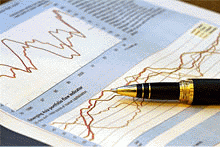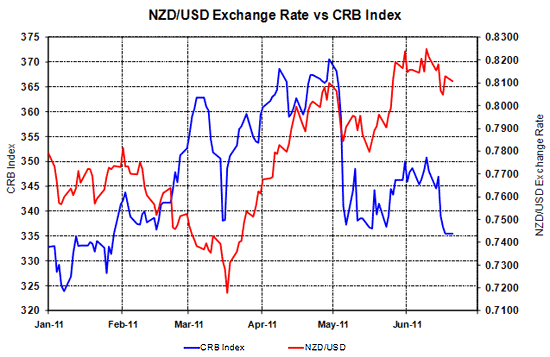
 By Roger J Kerr
By Roger J Kerr
The movements of the NZD/USD rate are just as much influenced by the fortunes of the USD on global FX markets as local developments.
Over recent months, reinsurance inflows, international investors buying NZ Government bonds and reports of large Chinese funds earmarked for NZ have pushed the Kiwi dollar upwards on its own account.
All the cross-rates have commensurately increased.
Adding to those local positives was a more upbeat outlook on the NZ economy by the RBNZ on 9 June, bringing forward the timing of interest rate increases.
The fact that the NZD/USD rate has not attempted to re-test the 0.8300 highs since is testimony that the aforementioned local positives may have run their course and the USD has found some support in global FX markets.
One significant change over the last week is the pull-back in commodity prices.
The oil price (WTI) has retreated from above $100 to $93/barrel since the Saudis walked away from OPEC production restrictions.
Question marks over 2012 GDP growth in the US and globally have certainly reduced the speculative intensity to constantly drive commodity prices higher over recent weeks.
The IMF has again lowered their 2012 global GDP growth forecast, this time from +2.8% to +2.5%.
A stronger USD and weaker AUD are always the result of lower commodity prices.
The Kiwi dollar exchange rate to the USD has retreated from 0.8300 to 0.8000 and looks set to return to the support area of 0.7850 as the Greek/European debt mess goes from bad to worse and the Euro weakens as a result.
A EUR/USD rate below $1.4000 (currently $1.4300) would pull the NZD/USD rate into the 0.7800’s.
The unanswered question for upcoming NZD direction is whether the FX markets have already fully priced-in the increase in NZ interest rates in late 2011/early 2012.
The forecast appreciation of the Kiwi off its own bat at that time will not necessarily pan out as anticipated if all the related buying has occurred already.
It is really difficult to see the European central bank raising interest rates again in the near term when so many of their members (and the major European banks) are in such debt difficulties. The EUR/USD rate appears headed for $1.3500, which should see the Kiwi testing 0.7850 to the downside.
The chart below suggests that the Kiwi has some catching up to do on the recent fall in commodity prices.

--------------------
* Roger J Kerr runs Asia Pacific Risk Management. He specialises in fixed interest securities and is a commentator on economics and markets. More commentary and useful information on fixed interest investing can be found at rogeradvice.com
No chart with that title exists.

We welcome your comments below. If you are not already registered, please register to comment.
Remember we welcome robust, respectful and insightful debate. We don't welcome abusive or defamatory comments and will de-register those repeatedly making such comments. Our current comment policy is here.